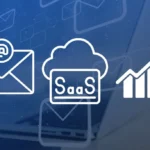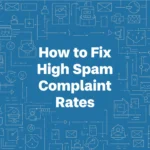The Cold Email Warm-Up Strategy: Why It’s Essential in 2025

Cold email is a vital strategy mostly used by businesses that aim to connect with potential clients. But in 2025, the email service providers (ESPs) have made it more challenging than ever by implementing stricter spam filters that block emails from landing in the recipient’s inbox. Here, cold email warm-up strategies come in handy.
The email warm-up strategy helps in increasing your email sending volume, which makes ESPs recognize your domain as trustworthy. You can also simulate genuine interactions to make a positive sender reputation, like by opening emails, marking them as important, and most importantly – by replying. All these will enhance your email deliverability rate and do not waste your outreach efforts for effective communication.
More importantly, to do email warm-up, you need a high-end tool like Relayzo. You know, Relayzo has now emerged as a comprehensive email marketing platform that will help you in this process. With amazing features that help businesses to gradually build positive sender reputations while ensuring email reaches the targeted recipients’ inboxes. Apart from that if you do not know what is cold email warm-up is? What are the cold email warm-up strategies? Why are they essential in 2025? To get all these answers, keep reading!
What Is Cold Email Warm-Up?
A process that helps you to introduce new email accounts or domains to Internet Service Providers (ISPs) and the recipients while building their trust before full-scale outreach. In this, the email sending volume is slowly increased and positively engaged, which results in making the provider see that your messages are authentic.
The warm-up phase can take up to 2 to 4 weeks. During this period, you can start slowly sending low-volume emails and work on a normal campaign level. This warm-up will help you in reaching the inbox of the recipients rather than their spam folder and protect your sender’s reputation from day one.
Why Warm-Up Matters in 2025
You know, 2025 is the era of AI, and all the service providers are now using AI-driven spam filters that study every message whether it is Gmail, Outlook, or Yahoo. Make it difficult to reach out using a cold email strategy. And if you can not do a proper email warm-up all your email can lead to increase in bounce rate, domain blacklisting and reduced sender reputation.
To avoid that from happening to you, you need to implement a warm-up process and start by sending low-volume email campaigns, and do not increase the volume before confirming a positive engagement. A slow increase in volume is a trick that helps in building email service provider trust and enhanced deliverability. But do not forget the compliance with strict authentication and spam regulations that lead to an increase in effectiveness and ROI of your email campaigns.
How to Warm Up Your Emails Effectively
An effective warm-up is the first step before a cold outreach, as it helps in building the sender’s reputation in a short time, whether you are a startup founder or a B2B marketer. A warm-up will make sure that the providers recognize your domain as a legitimate and authentic one.
In warm-up, you must start with a few targeted and high-quality emails to slowly increase your pace of sending emails, as you get consistent opens and replies. While these positive engagements show email providers your messages are important and not spam. Moreover, these warm-up steps help you in increasing the sending of high-volume emails without getting blocked or put in the spam folder by email providers such as:
Authenticate your sending domain:
Must add SPF, DKIM, and DMARC DNS records to verify to email providers that your messages are authentic and not manipulated.
Use a dedicated email domain or IP:
Send from a new or subdomain (and a dedicated IP if possible) that separates you from your main business domain. This strategy will protect your primary brand’s reputation while you warm up a clean address.
Start with low volume
Send a low volume of highly personalized emails to warm contacts. This strategy provides authentic opens and replies that every business owner needs, as it is a valuable positive signal for them.
Encourage real engagement
Write each warm-up email like a genuine conversation, not as a casual email. Ask an engaging question or share a valuable perception to entice recipients to open and reply, while each reply is a strong trust signal for your sender reputation.
Increase volume gradually
Every few days, raise your daily send limit by a small amount (e.g., +5–10 emails) if your email engagement stays strong. Do not hurry to send a huge volume of emails that could trigger spam filters.
Maintain consistency and quality
Always keep a steady pace in sending emails and ensure each email is clear, relevant, and spam-free. Moreover, avoid sales language or excessive punctuation when writing emails in these early sends.
Monitor metrics and clean your list
Always track your emails’ open rate, bounce rate, and spam complaints closely for immediate action. Must remove unwanted and invalid email addresses to protect your sender score, which maintains your sender reputation.
Use an automated warm-up tool (optional)
If your manual warm-up does not work or is too time-consuming, then consider an email warm-up service. As they are developed for the ease of business, they can automatically manage all the operations. From sending and responding to emails to maintaining engagement that boosts your sender reputation and deliverability.
Tools and Best Practices
There are different types of tools available in the market that help you in your email warm-up to enhance your sending email volume. These tools are also very helpful for businesses in maintaining recipient engagement, boosting sender reputation, and deliverability. But if they do not have any idea about them, to guide them about the tools that are the most suitable and might be helpful for their business, are mentioned below:
Automated Warm-Up Services
As mentioned, services like Warmbox, Lemwarm, Mailivery, and others automate the back-and-forth of warming. They operate on networks of real inboxes to “open and reply” to your emails to quickly boost your reputation.
All-in-One Email Platforms
Solutions like Relayzo offer a built-in deliverability management system that provides advanced analytics and integrations. So you can send high-volume campaigns from a powerful system. Using such platforms will be very useful for your business to warm up your cold emails, which is part of a solid infrastructure, not a one-off effort.
List Hygiene and Compliance
Always use double opt-in or verified lists during warm-up to avoid invalid addresses. A clean list means far fewer bounces (Remember: verified lists can cut bounce rates by ~98%). Respect privacy regulations (GDPR, CCPA) by obtaining consent and honoring unsubscribes, even during warm-up.
Content Tactics
Focus on personalization and relevance. In 2025, personalization gets 2–3× better response rates, and generic emails are trashed. Even in warm-up sends, craft each email to look like a real message from a team member, not a bulk blast.
Metrics to Track
Beyond bounce and complaint rates, track response rate and engagement. Open rates alone can be misleading (Apple Mail’s privacy shielding makes opens unreliable). Instead, measure how many recipients actually reply or click. A positive, human reply (“Can you tell me more?”) is the true sign of a healthy sender.
Conclusion
In today’s B2B landscape, a cold email without a proper warm-up is like launching a boat without checking the hull. Stricter spam filters, AI-driven inbox survey, and new compliance rules make warm-up absolute. To enhance or build your sender reputation, you must have authenticated domains, measure volume before sending, and use smart tools that will significantly boost deliverability. Studies and case stories show that warmed-up accounts achieve inbox rates well over 90%, turning cold outreach into warm leads.
Recent Posts
-
 How Self-Hosted Email Marketing Helps You Cut Monthly SaaS Costs
How Self-Hosted Email Marketing Helps You Cut Monthly SaaS Costs -
 How Self-Hosted Email Marketing Improves Privacy and Data Ownership
How Self-Hosted Email Marketing Improves Privacy and Data Ownership -
 The Complete Guide to Running High-Volume Campaigns on a Self-Hosted Email Marketing Software
The Complete Guide to Running High-Volume Campaigns on a Self-Hosted Email Marketing Software -
 How to Fix High Spam Complaint Rates
How to Fix High Spam Complaint Rates -
 How to Use AI to Write Personalized Cold Emails
How to Use AI to Write Personalized Cold Emails
